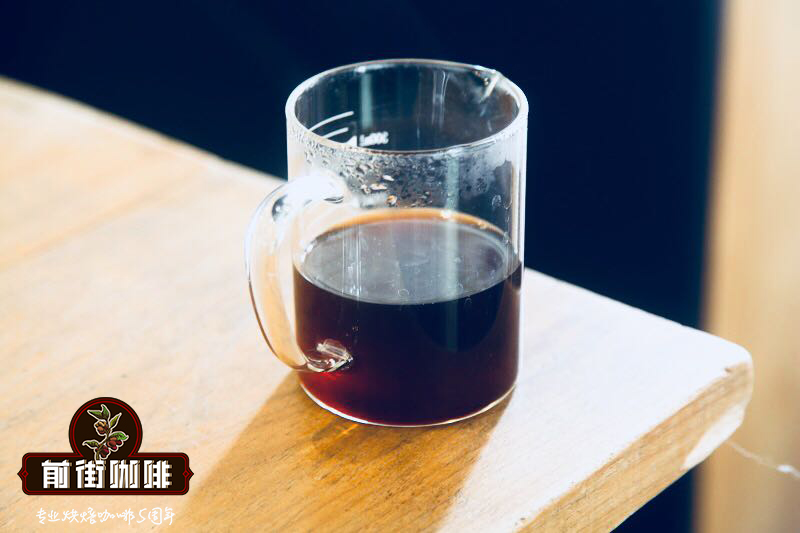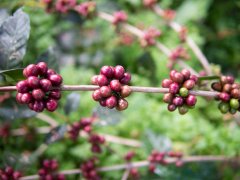Papua New Guinea Coffee characteristics Papua HOAC Cooperative Paradise Bird Coffee Bean flavor introduction

Professional coffee knowledge exchange more coffee bean information please follow the coffee workshop (Wechat official account cafe_style)
Independent State of Papua New Guinea (PNG) is an island country located in the southwestern Pacific Ocean. The volcanic belt around the Pacific Ocean, which belongs to volcanic geology and has fertile soil, is an important natural condition for breeding good coffee. Coffee is very important to Papua New Guinea and is the only cash crop in the highlands of Papua New Guinea. More than 2 million small farmers in Pakistan and their families rely on coffee as an important source of livelihood.
Although it has a good environment, the share of coffee beans in the world is not high, only 0.7%. Most of the coffee beans in Papua New Guinea are grown in the highlands, and the proportion of Arabica is as high as 95%. The coffee beans in Papua New Guinea are mainly sun-dried after washing and fermentation before treatment, and the main varieties are bourbon, Arusha and Mon Donovo.
In Pakistan, important coffee producing areas are East Highlands, Enga, West Highlands and Chinbu provinces, most of which are 1200-1900 meters above sea level, with a Central American style. If the production system is dominated by small farmers, a few have large estates or government-specific support programs. The coffee beans in Papua New Guinea have been respected by many people in recent years because of their solid taste, low acidity and clean flavor, which is in line with the Asian preference for coffee and is a rising producer of Asian coffee.
The HOAC Cooperative (The Highland Organic Agriculture Cooperative) is made up of a group of small farmers living in the Purosa/Okapa region of Papua New Guinea's eastern upland province. With its picturesque scenery and rich Rain Water and volcanic soil, it is ideal for growing high-quality Arabica coffee, but the region is also poor and the dilapidated external roads make it impossible or expensive to deliver to the market, the only cash crop.
Join Fairtrade Community Development Fund to boost the local economy in 2006, HOAC joined the Fair Trade Organization, which not only benefited farmers, but also invested the community development funds returned by Fairtrade into the construction of external roads, smoothing the originally muddy roads that could not be driven safely, building a safe road for the residents of the whole region and reducing the cost of transporting coffee. In addition, HOAC also uses the Fair Trade Community Development Fund to enhance local medical services, buy more medicine and bed sheets for medical centers, and buy books and notebooks for schools, so that local residents can have a better living and learning environment.
The dream of the small farmers of the HOAC cooperative is not only that. In addition to working with Fairtrade to implement their community building plan, they also plan to use community development funds. Not only that, the Fairtrade Community Development Fund also buys new coffee washing equipment and processing equipment for the local area, so that farmers can pick coffee beans, wash and peel them in fresh water in time, and keep the coffee beans intact, in addition to improving the quality of the products. At the same time, we can master more links of the supply chain and make more profits and be more competitive in the market.
Important Notice :
前街咖啡 FrontStreet Coffee has moved to new addredd:
FrontStreet Coffee Address: 315,Donghua East Road,GuangZhou
Tel:020 38364473
- Prev

90 + Coffee Ninety Plus Coffee
Then why write a special article about a raw bean company, 90yuan? (and the length is not short) 90 + coffee has become an indispensable topic in the boutique coffee circle in recent years. Beans that have not drunk 90 + should at least know what 90 + is popular. The focus of the topic is nothing more than the following two points: what is the new concept of 90 +? What kind of new beans has come out of 90+? From this, we can
- Next

What kind of coffee grinder? How do I buy it? How can I make coffee without a coffee maker?
Making coffee itself can be affected by many factors, such as coffee powder, proportion and water temperature. The quality of the bean grinder is important for a cup of coffee. For example, the powder ground by a poor quality bean grinder is uneven in thickness, with large and small particles, and when a stream of hot water is washed down, within three minutes, the large particles have not yet been extracted, and the small particles have been extracted.
Related
- Beginners will see the "Coffee pull flower" guide!
- What is the difference between ice blog purified milk and ordinary milk coffee?
- Why is the Philippines the largest producer of crops in Liberia?
- For coffee extraction, should the fine powder be retained?
- How does extracted espresso fill pressed powder? How much strength does it take to press the powder?
- How to make jasmine cold extract coffee? Is the jasmine + latte good?
- Will this little toy really make the coffee taste better? How does Lily Drip affect coffee extraction?
- Will the action of slapping the filter cup also affect coffee extraction?
- What's the difference between powder-to-water ratio and powder-to-liquid ratio?
- What is the Ethiopian local species? What does it have to do with Heirloom native species?

